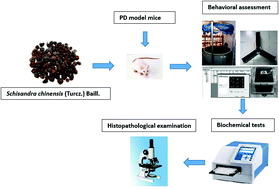Schisandra chinensis protects against dopaminergic neuronal oxidative stress, neuroinflammation and apoptosis via the BDNF/Nrf2/NF-κB pathway in 6-OHDA-induced Parkinson's disease mice
Abstract
Parkinson's disease (PD) is a progressive neurodegenerative disorder characterized by a disorder of both the motor and nonmotor systems due to a loss of dopaminergic (DA) neurons. Herein, we aimed to investigate the potential neuroprotective role of Schisandra chinensis (Sch) and to determine the mechanism by which Sch functions to ameliorate PD in a 6-hydroxydopamin (6-OHDA)-induced PD model. The open field test, sucrose preference test, and Y-maze test were utilized to evaluate the motor and nonmotor symptoms. We found that administration of Sch improved both disorders and DA neurodegeneration in 6-OHDA-induced mice. Additional data confirmed that Sch treatment significantly increased BDNF expression and decreased the activity of GSK-3β in the striatum and hippocampus. Moreover, Sch was able to alleviate the abnormal levels of ROS and increase SOD by boosting Nrf2 expression. The nuclear translocation of NF-κB was inhibited by Sch, which subsequently led to a downregulation of proinflammatory cytokines. Sch effectively suppressed apoptosis by decreasing expressions of caspase 3, caspase 9, and p53 in the PD mouse model. Our findings demonstrate that Sch protects against DA neurodegeneration in 6-OHDA-induced PD mice by suppressing oxidative stress, neuroinflammation and apoptosis through the involvement of the BDNF/Nrf2/NF-κB signaling pathway.



 Please wait while we load your content...
Please wait while we load your content...